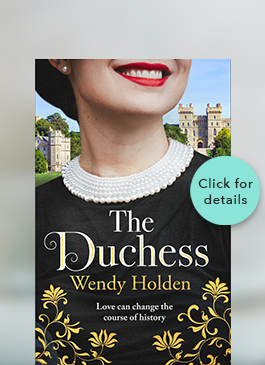The Windsor Trilogy
I was browsing in a second-hand bookshop when a battered old volume fell off the shelves and landed at my feet. Picking it up, I saw it was The Little Princesses, the autobiography of Marion Crawford, one-time governess to Queen Elizabeth II. It rang a vague bell, some scandal or other.
Flicking through it, I realised it encompassed some of the most seismic events of the twentieth century. The Abdication, World War II, the Coronation of King George VI and Queen Elizabeth. From her position right at the heart of the Royal Family, Marion 'Crawfie' Crawford experienced these historic moments alongside her employers. From Edward and Mrs Simpson to Winston Churchill she knew all the major players.
Central to everything was her close relationship with the Princesses Elizabeth and Margaret. From their earliest youth to their twenties, Marion shared their lives, took them shopping and swimming, devised pantos for them to act in, sheltered with them from the Luftwaffe in the medieval cellars of Windsor Castle and was present when they met the men with whom they fell in love. The sensible Scottish lass who'd once aimed to teach in the slums of Edinburgh became teacher, companion and confidante to the most privileged children in the world.
And then it had all gone wrong. Crawfie had been brutally cast out and never recovered from the rejection. What on earth had happened? But the trail had gone cold; most historical sources were bitterly critical of the once-beloved governess. That there was a mystery was obvious, but even more obvious was that here was the historical novel I had long been itching to write.
So began The Governess, which went on to be a Sunday Times top ten bestseller, sold to countries all over the world and was the first in what became the Windsor Women Trilogy. The second, The Duchess, about Wallis Simpson, developed from her brief but striking appearance in The Governess. Having uncovered the truth about the much-maligned Marion, I began to imagine an alternative to the usual idea of Wallis as an evil, social-climbing manipulator.
What if someone had been manipulating her? Someone at the very top of the social tree? How exactly had the poor, plain, obscure, middle-aged foreign divorcee, unsuitable in every possible way, won the heart of the world's most eligible bachelor, the dazzling Prince of Wales? More to the point, why?
From there, the subject for the third in the trilogy was obvious. Besides Crawfie and Mrs Simpson, one other woman had shaken the House of Windsor to its foundations. But as with my previous subjects, I was most interested in Princess Diana's backstory. She became the most famous woman in the world, but before that she was a sad little girl with a passion for paperback romances. How had one become the other? This is the little-known story I explore in The Princess.



